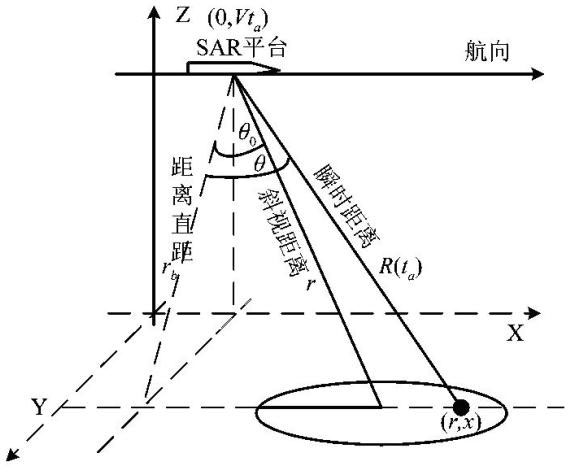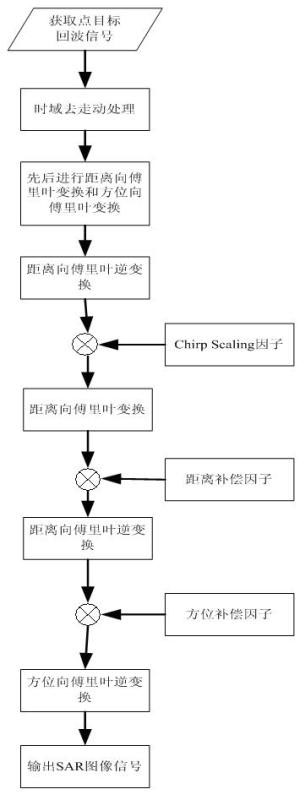Airborne SAR (synthetic aperture radar) imaging method suitable for large squint angle
An imaging method and oblique angle of view technology, applied in the field of remote sensing image processing, can solve problems such as difficulty in ensuring image quality, image phase distortion, and difficulty in reducing two-dimensional coupling
- Summary
- Abstract
- Description
- Claims
- Application Information
AI Technical Summary
Problems solved by technology
Method used
Image
Examples
Embodiment Construction
[0077] The effectiveness of the signal processing method is verified by processing the point target echo signal of the present invention in combination with specific radar parameters.
[0078] Table 1 gives the basic parameters of the radar
[0079] parameter value Flight speed of SAR platform (m / s) 250 The squint distance between the antenna and the center of the scene zone r(Km) 13 carrier frequency (GHz) 10 pulse width (s) bandwidth (MHz) 100 Frequency repetition period T(s) Synthetic aperture length l(m) 300
[0080] Carry out imaging processing on the echo signals of point targets and lattice targets respectively according to the following steps, and the imaging processing uses the software matlab to carry out simulation processing.
[0081] like figure 2 Shown, a kind of airborne SAR imaging method that is applicable to large oblique viewing angle of the present invention, the concrete steps of thi...
PUM
 Login to View More
Login to View More Abstract
Description
Claims
Application Information
 Login to View More
Login to View More - R&D
- Intellectual Property
- Life Sciences
- Materials
- Tech Scout
- Unparalleled Data Quality
- Higher Quality Content
- 60% Fewer Hallucinations
Browse by: Latest US Patents, China's latest patents, Technical Efficacy Thesaurus, Application Domain, Technology Topic, Popular Technical Reports.
© 2025 PatSnap. All rights reserved.Legal|Privacy policy|Modern Slavery Act Transparency Statement|Sitemap|About US| Contact US: help@patsnap.com



